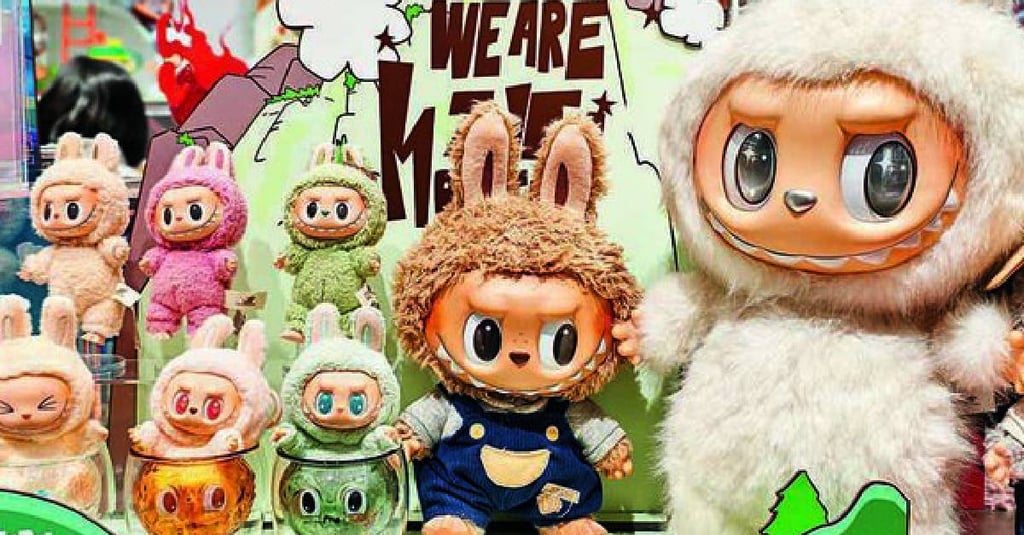The Labubu craze: How a quirky toy won hearts from Sikkim to the world
As Pop Mart continues to innovate with new series, crossovers, and exclusive merchandise, Labubu’s journey is far from over.
LOCAL


A peculiar creature with a mischievous grin, wild tufts of fur, and squinty eyes has quietly become the darling of collectors and pop culture enthusiasts worldwide. Known as Labubu, this elf-like monster is not just a toy—it’s a phenomenon. Born from the imagination of Dutch-Chinese illustrator Kasing Lung, and brought to life by popular Chinese toy manufacturer Pop Mart, Labubu is rapidly evolving from a niche designer toy into a global cultural icon—and Sikkim is catching on fast.
Labubu isn’t your typical plush toy. Its design—an oddball blend of Nordic folklore aesthetics and Asian designer toy culture—has intrigued adults and young collectors alike. Originally introduced as part of the The Monsters series, the toy’s slightly creepy-yet-cute features have struck a chord with those who enjoy the unexpected. Standing no taller than a water bottle, this vinyl figure—or its increasingly popular plush counterpart—is both a toy and a piece of modern art.
Unlike mass-produced dolls and action figures, Labubu often comes in “blind boxes”, where buyers don’t know which version they’re getting until they open it. This surprise element, combined with limited-edition drops and ever-evolving character designs, has built a sense of urgency and thrill in the collector community.
The global rise of Labubu didn’t happen overnight. While Pop Mart has been around since 2019, it wasn’t until 2023 that Labubu truly exploded in popularity, thanks to the viral spread of plush keychain drops. TikTok, Instagram, and YouTube were suddenly awash with unboxing videos, display shelf tours, and even Labubu-inspired fashion.
Soon, international celebrities joined the party. When Kim Kardashian, Paris Hilton, Rihanna, and Blackpink’s Lisa were spotted with Labubu accessories, it officially transcended niche markets and entered the mainstream. The result? Standard editions now retail between ₹700 and ₹2,500, while rare pieces can fetch up to ₹10,000—or more—on resale platforms.
In the hills of Sikkim, the Labubu craze is quietly but unmistakably taking root. From Gangtok to Namchi, local collectors are showcasing their Labubu collections on social media, participating in online trading groups, and forming their own mini fan communities. Toy shops in the region report a steady rise in inquiries, and although most Labubu pieces are still sourced online, demand is growing rapidly.
According to 21-year-old Rinzing Bhutia, a Gangtok-based toy collector, “Labubu is not just a toy—it’s like having a piece of imagination in your hand. Every version has a different story, and it makes collecting so exciting.”
For many, the appeal is more than aesthetic. The unboxing thrill, the community bonds formed through trading and discussions, and the emotional comfort these toys bring have made Labubu more than a collectible—it’s a lifestyle.
Labubu’s remarkable success can be traced to a unique combination of four powerful forces. First, social media virality has played a central role. Platforms like TikTok and Instagram are filled with unboxing videos, collector showcases, and fan art that have brought Labubu into the digital spotlight. These visual mediums have helped amplify its charm, especially among younger audiences who are quick to embrace trends that are both quirky and visually appealing.
Second, celebrity endorsements have significantly boosted Labubu’s visibility and desirability. When global icons like Kim Kardashian, Paris Hilton, and K-pop stars are seen carrying Labubu accessories, the toy gains a sense of glamor and trendiness that transcends age and geography, drawing in fans from all walks of life.
Third, the availability of limited editions has added an irresistible element of scarcity. Labubu releases are often produced in small quantities, turning each drop into a mini event. This limited availability creates urgency among collectors and elevates the thrill of the hunt, driving both sales and secondary market demand.
Lastly, Labubu thrives because of its community culture. Online forums, trading groups, and local collector meetups have fostered a strong sense of connection among fans. Whether they’re swapping duplicates or simply admiring each other’s collections, collectors find joy and friendship within the Labubu community.
In an age overflowing with short-lived fads, what truly sets Labubu apart is its ability to evoke real joy, a sense of nostalgia, and heartfelt curiosity. Its eccentric design might seem strange at first glance, but spend a little time with it, and the charm becomes undeniable.
As Pop Mart continues to innovate with new series, crossovers, and exclusive merchandise, Labubu’s journey is far from over. Plans for anime adaptations, fashion collaborations, and augmented reality experiences are reportedly in the pipeline.
For Sikkim’s young collectors and toy hobbyists, Labubu is more than just an imported trend. It’s a symbol of global belonging—a reminder that even in the remotest corners of the Himalayas, pop culture is a shared experience.
In a world that often feels chaotic and fast-paced, the Labubu phenomenon is a delightful reminder that sometimes, all it takes is a small, toothy monster to bring a little joy—and a whole lot of magic—into people’s lives.
